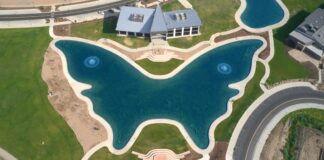Japan’s nuclear safety agency has raised the assessment of the severity of the disaster at the Fukushima Daiichi power station to 5 from 4 on a 7-level international scale. Level 4 is for incidents with local consequences while level 5 — the rating used for crisis at Three Mile Island in 1979 — indicates the spread of radiation.
International nuclear experts, meanwhile, suggested that Japan should have pegged the crisis at level 5 days ago. They warned that Japanese authorities still seem to be underestimating the impact of the partial meltdowns at Fukushima. The Chernobyl disaster in 1986, the world’s worst nuclear calamity, was rated a 7.
Japan plans to import about 150 tons of boron from South Korea and France to mix with water to be sprayed onto damaged reactors, French and South Korean officials said Friday. Boron absorbs neutrons during a nuclear reaction and can be used in an effort to stop a meltdown if the zirconium cladding on uranium fuel rods is compromised.
Tokyo Electric Power Company, which operates the Fukushima plant, has admitted there is a possibility of recriticality developing in more than 11,000 spent fuel rods that are stored in unprotected pools near the Fukushima reactors. They say fission in the tons of spent fuel could resume if fuel rods melted and their uranium pellets formed a radioactive puddle on the floor of a storage pool or reactor core. Spraying pure water on the uranium under these conditions can actually accelerate fission, nuclear engineer Robert Albrecht told the New York Times.












![[VIDEO] Get More for Your Business in Ardmore. Oklahoma](https://businessfacilities.com/wp-content/uploads/2024/02/maxresdefault-324x160.jpg)
